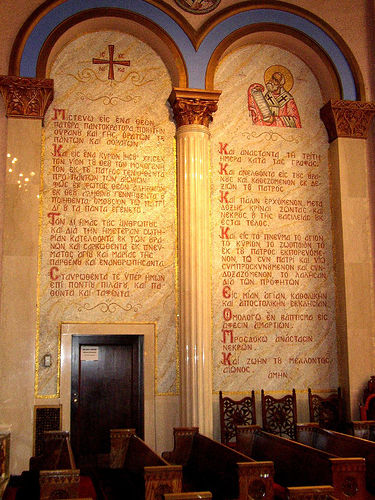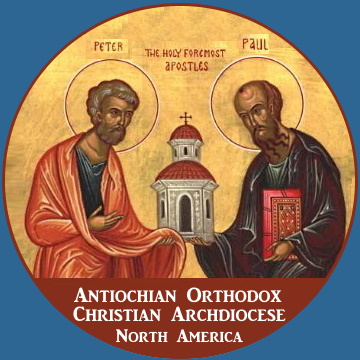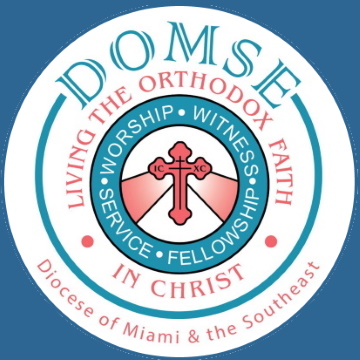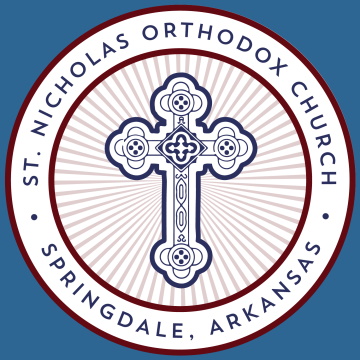The Nicene-Constantinopolitan Creed
The Nicene-Constantinopolitan Creed (also called the Nicene Creed, the Icon / Symbol of Faith, the Pistevo, or simply: the Creed) was formulated at the First![]() and Second
and Second![]() of the commonly recognized Seven Ecumenical Councils
of the commonly recognized Seven Ecumenical Councils![]() . It was defined by the Holy Fathers
. It was defined by the Holy Fathers![]() of those first two councils (held in Nicea
of those first two councils (held in Nicea![]() and Constantinople
and Constantinople![]() , respectively) to combat various heresies: notably Arianism
, respectively) to combat various heresies: notably Arianism![]() , Apollinarianism
, Apollinarianism![]() , Macedonianism
, Macedonianism![]() (also called Pneumatomachianism), and Chiliasm
(also called Pneumatomachianism), and Chiliasm![]() .
.
Some scholars believe that the Creed promulgated by the First Ecumenical Council![]() was based on an earlier baptismal creed used in Palestine (the Apostles’ Creed), while others regard its more likely origin as being a creed issued early in AD 325 in Antioch, a so-called “Syrian Creed.”
was based on an earlier baptismal creed used in Palestine (the Apostles’ Creed), while others regard its more likely origin as being a creed issued early in AD 325 in Antioch, a so-called “Syrian Creed.”
The Creed – as it now stands and is used in the Orthodox Church![]() – was formed in two stages and includes the original Nicene Council’s Creed and the additions made at the Second Ecumenical Council
– was formed in two stages and includes the original Nicene Council’s Creed and the additions made at the Second Ecumenical Council![]() . (Some centuries later, the Roman Church
. (Some centuries later, the Roman Church![]() attempted a unilateral revision of the Creed by the addition of the word “Filioque
attempted a unilateral revision of the Creed by the addition of the word “Filioque![]() ” (i.e. and the Son), thus being one of the causes of the Great Schism
” (i.e. and the Son), thus being one of the causes of the Great Schism![]() between Rome in the West and the rest of the Christian Church – the other four Great Sees in the East.)
between Rome in the West and the rest of the Christian Church – the other four Great Sees in the East.)
The Coptic Church![]() has a tradition that the Nicene Creed was authored by Saint Athanasius of Alexandria
has a tradition that the Nicene Creed was authored by Saint Athanasius of Alexandria![]() , whose theology was instrumental at the Nicene Council, despite his being only a deacon at the time – and very young!
, whose theology was instrumental at the Nicene Council, despite his being only a deacon at the time – and very young!
The Symbol of Faith
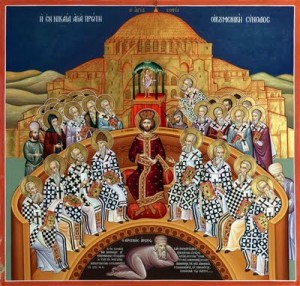 I* believe in one God, the Father Almighty, Maker of heaven and earth, and of all things visible and invisible;
I* believe in one God, the Father Almighty, Maker of heaven and earth, and of all things visible and invisible;
And in one Lord, Jesus Christ, the Son of God, the Only-begotten; Begotten of the Father before all ages; Light of Light, Very God of Very God; Begotten, not made; of one Essence with the Father; by Whom all things were made. Who for us men and for our salvation came down from heaven, and was incarnate of the Holy Spirit and the Virgin Mary, and was made man; And was crucified also for us under Pontius Pilate, and suffered and was buried; And the third day He rose again, according to the Scriptures, and ascended into heaven, and sitteth at the right hand of the Father; And He shall come again with glory to judge both the living and the dead (Whose kingdom shall have no end).
And in the Holy Spirit, the Lord and Giver of Life; Who proceedeth from the Father; Who with the Father and the Son together is worshipped and glorified; Who spake by the Prophets.
And I believe in one Holy, Catholic and Apostolic Church. I acknowledge one Baptism for the remission of sins; I look for the Resurrection of the dead, and the Life of the world to come. Amen.
* Note: As recited in the Liturgy of the Church, we use the first-person, singular, “I believe” throughout the Creed; as a conciliar decree, it was originally set down in the plural, “We believe”
